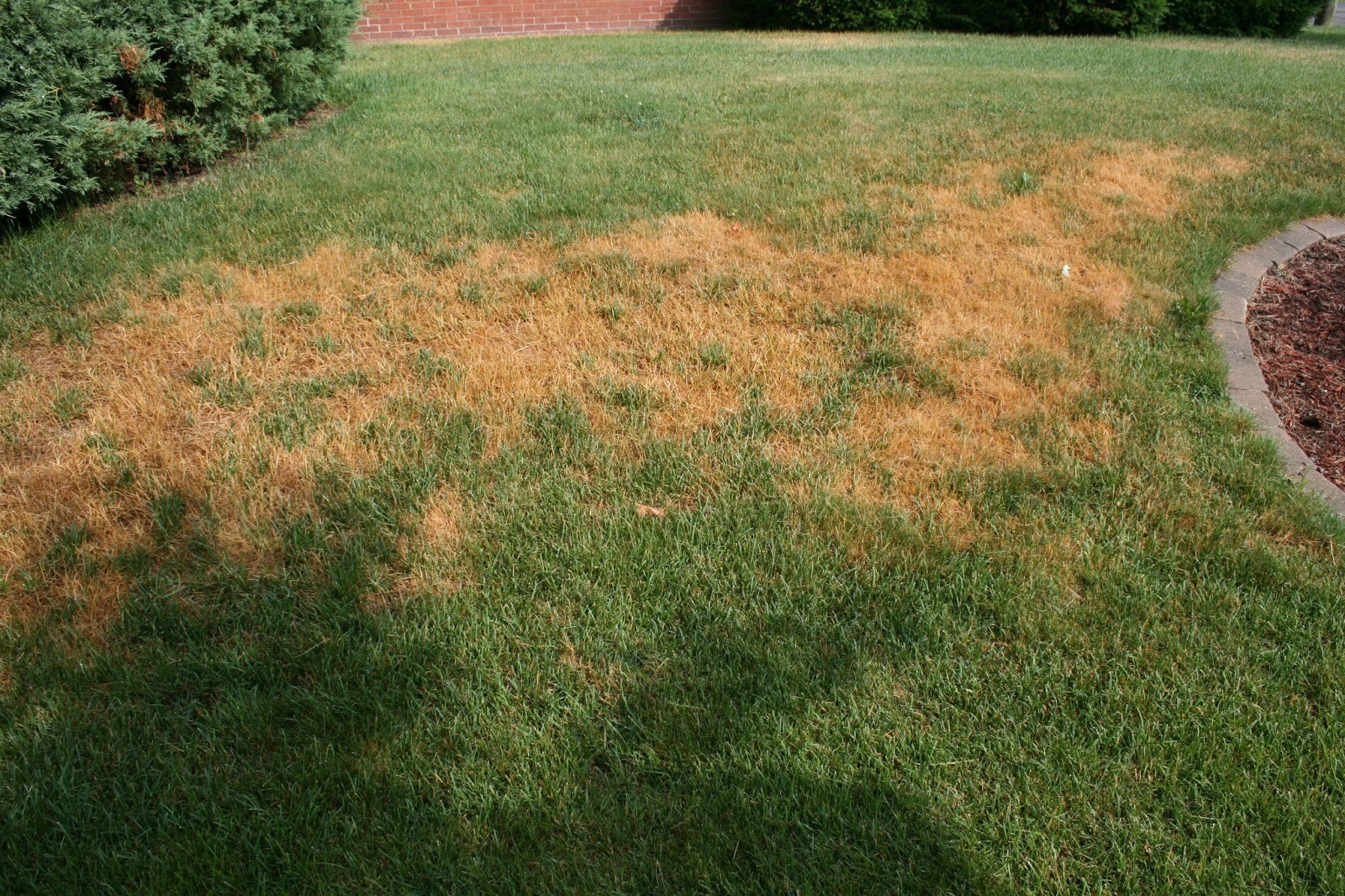
Dang! It’s hot…
Our lawns are either thriving or diving right now! If you’re watering correctly, mowing high weekly, have good soil for roots to go deep and a great Fertilization & Weed control program then chances are your lawn is one of the best on the block!

This time of year we are seeing something called Heat Dormancy. That’s right, grass can go dormant in winter and in the summer. This is a protective mechanism to save its own root system. It shows up as splotchy yellow/brown discolorations throughout the lawn. Very unsightly but can tell us a lot about what our lawn is lacking so we can help it. Here are 4 things to look for:
- It could be as simple as you are mowing too low and with dull blades. The sun and heat are drying out the soil at a quicker rate and taller thicker grass can help shade the soil and retain more moisture. Dull blades tear and don’t cut which further stresses the turf and can lead to infection or disease.
- Did you know mowing less frequently than once per week can stress your turf and shock it into heat dormancy? Our warm-season grasses under the right conditions grow the most during our summers and if we let it grow for say a week and a half or two weeks and then come cut it back down low by cutting way too much off the top you will certainly severely stress your turf. Prevent this by mowing routinely every week and taking only the top 1/3 of the blades off the top and mulching them in. Some think if they mow low they don’t have to mow as often but that’s actually not true.
- Watering correctly and ensuring sprinkler heads are not broken, blocked, and aligned to get the correct coverage. Irrigate 3 nights/week at 12 am, 3 am, and 6 am unless under City restriction. See more details on how to water your lawn correctly here.
- Improve soil conditions. Sometimes the whole lawn looks great but there are a few areas that still look rough after mowing and watering correctly. This could be due to compacted hard soil and/or not enough soil. For example, your soil is very shallow and maybe there is limestone underneath such as many lawns in Midlothian or something else like construction debris preventing the roots to go deeper to help curb the heat stress. Amend this by aerating to loosen the soil and/or adding organic compost. Also, peat moss is my favorite go-to in those trouble spots.
So Why Are They Called the “Dog Days” of Summer?
Article By Farmers Almanac Staff
The phrase is actually a reference to the fact that, during this time, the Sun occupies the same region of the sky as Sirius, the brightest star visible from any part of Earth and part of the constellation Canis Major, the Greater Dog. This is why Sirius is sometimes called the Dog Star.
We often hear about the “dog days” of summer but few know what the expression means. Some say that it signifies hot sultry days “not fit for a dog,” others suggest it’s the weather in which dogs go mad. The Dog Days of Summer describes the most oppressive period of summer, between July 3rd and August 11th each year. But where did the term come from? And what does it have to do with dogs?
In the summer, Sirius rises and sets with the Sun. On July 23rd, specifically, it is in conjunction with the Sun, and because the star is so bright, the ancient Romans believed it actually gave off heat and added to the Sun’s warmth, accounting for the long stretch of sultry weather. They referred to this time as diēs caniculārēs, or “dog days.”
Thus, the term Dog Days of Summer came to mean the 20 days before and 20 days after this alignment of Sirius with the Sun—July 3 to Aug. 11.
If you found this article helpful let us hear it.
Higher Ground Lawn Care and Lighting are ready to take your property to a higher level. Experience why your neighbors and businesses in University Park, TX & surrounding areas choose Higher Ground Lawn Care & Lighting to bring their property to the next level. Contact Us at (682) 206-3596 or check out our website today.
Ready to get started?


